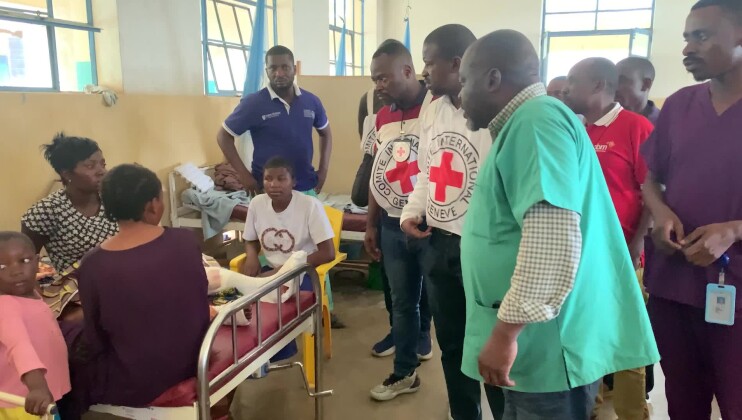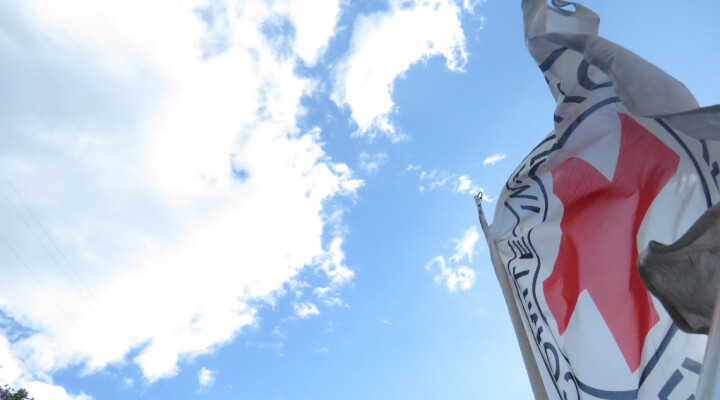Somalia: Spike in fighting sees three-fold increase in wounded
The number of people wounded by conflict in Somalia has increased dramatically this year. As hostilities have flared in different parts of the country, ambulance teams from the Somali Red Crescent Society have reported a more than three-fold rise in the number of people requiring treatment for weapon wounds.
The ongoing military offensive by the government against Al Shabaab has intensified in recent months while a new conflict in the northern part of the country between the Somaliland army and SSC Khatumo forces has seen a sharp spike in the number of people wounded. The three Red Crescent emergency response teams in Mogadishu, Galkacyo and Las Anod report that close to 1,900 people required treatment for weapon wounds in the past eight months of the year – an increase of over 300% per cent compared with the entirety of 2022.
Another indication of worsening conflict across the country is that the number of people uprooted from their homes has more than tripled this year. According to data from the Protection and Return Monitoring Network, 569,000 people were displaced due to conflict or insecurity between January and July, compared to 168,000 over the same period last year. Conflict is the main factor in forcing people to leave their homes this year, followed by climate shocks like droughts and floods.
Las Anod, the capital of Sool region, has been the main battleground of the fighting in the northern part of the country, resulting in a significant number of casualties and the destruction of civilian infrastructure. The Red Crescent ambulance team in the town has treated and transported to hospital more than 1,700 people with conflict-related injuries this year.
“Shortly after the shelling started there was a lot of loss. The Red Crescent got involved immediately with the emergency and the ambulance teams. They were attending to the wounded and the dead,” said Amal Hassan, who is part of the Red Crescent team in Las Anod.
The team has collected close to 80 dead bodies this year, the majority of them following the latest round of fighting in August. The International Committee of the Red Cross (ICRC) has been supporting the Red Crescent’s three emergency response centres and recently trained the Las Anod team on how to handle and collect human remains in a safe and dignified way. In December last year, the ICRC also trained Red Crescent ambulance response teams and Aamin Ambulances staff, as well as medical personnel from hospitals in Mogadishu, on dead body management.
“We trained a team from the Somali Red Crescent on management of the dead. We are planning to also train the soldiers from both sides. They have a responsibility to handle the dead in a respectful manner. To properly document them. So later, it will be easier to identify the deceased and inform their families,” said Mohamed Abdi Wadi, a protection delegate who covers northern Somalia for the ICRC.
Between January and June this year, the ICRC has supported close to 97,000 people who were displaced by either conflict, drought or floods. The ICRC also supports four main hospitals located in Kismayo, Mogadishu and Baidoa.
For further information, please contact:
Alyona Synenko, ICRC Nairobi, +254 716 897 265, asynenko@icrc.org
Abdikarim Mohamed, ICRC Somalia, +254 770 171 756, mabdikarim@icrc.org
SHOTLIST
Location: Las Anod
Language: Somali
Length: 5’ 31’’
Format: mp4, h.264
Producer: Abdikarim Mohamed
Camera: Abdikarim Mohamed
Editor: Abdikarim Mohamed
Filming date: 31st August & 1st September 2023
Copyright: ICRC access all
Shot list
Time Codes
00:00 - 00:08: Long shot of Somali Red Crescent Society (SRCS) team collecting a dead body in Goja Cade in the outskirts of Las Anod.
00:08 - 00:44: Medium shot of SRCS putting the body in the body bag.
Soundbite (Mohamed Abdi Wadi – ICRC Protection Delegate)
00:44 - 00:48: As the Red Cross, we work closely with the Red Crescent.
00:48 - 00:54: There has been fighting going on in this area since February between SSC Khatumo and Somaliland.
00:55 - 00:57: Today, we are collecting the dead from this place.
00:57 - 01:03: Collecting of the dead and documentation is very important for the Red Crescent and the Red Cross.
01:03 - 01:06: The families of the deceased miss them.
01:07 - 01:13: It's important for proper identification and the families to be made aware of their fate.
01:13 - 01:16: So that is what we are doing here today.
Soundbite (SRCS): Amal Hassan
01:16 - 01:22: The fighting started on 6th February, very early in the morning when people were asleep.
01:22 - 01:29: Shortly after the shelling started there was a lot of loss.
01:29 - 01:35: The Red Crescent got involved immediately with the emergency and the ambulance teams.
01:36 - 01:42: They were attending to the wounded and the dead. The wounded were the priority.
01:42 - 01:44: The wounded were taken to hospital.
01:45 - 01:49: They have been working for the past eight months, since the conflict began.
01:49 - 01:54: The whole Red Crescent team in the Sool region.
01:54 - 01:57: The ambulance team has done a lot of work.
01:57 - 02:02: Today, they are collecting the dead and burying them.
02:02 - 02:06: For the past eight days they have been collecting the dead.
02:06 - 02:08: And before that they were attending to the wounded.
Soundbite (Mohamed Abdi Wadi – ICRC Protection Delegate)
02:09 - 02:15: We trained a team from the Somali Red Crescent on management of the dead.
02:16 - 02:19: We are planning to also train the soldiers from both sides.
02:19 - 02:24: They have a responsibility to handle the dead in a respectful manner.
02:24 - 02:26: To properly document them.
02:26 - 02:32: So later, it will be easier to identify the deceased and inform their families.
02:32 - 02:48: Abdiqani Elmi, one of the dispatchers of the SRCS in Las Anod.
02:48 - 02:55: SRCS Las Anod branch dispatcher makes a record of an emergency caller.
02:55 - 03:01: Drop-down menu in the software showing the different types of emergencies.
03:01 - 03:09: Dispatcher typing on the keyboard.
03:09 - 03:21: A building along the highway in Las Anod that was damaged by the fighting.
03:21 - 03:27: Different angle shot of the building.
03:27 - 03:35: Iron sheets on the side of the road from destroyed structures in Las Anod town.
03:35 - 03:42: Close-up of the iron sheets.
03:42 - 03:50: A hotel in Las Anod with holes in the building from the fighting that happened in the town.
03:50 - 04:02: The main road that cuts across Las Anod town in Sool region.
04:02 - 04:10: Wall inside Las Anod hospital.
04:10 - 04:20: A building inside Las Anod hospital that was damaged in the fighting.
04:20 - 04:51: Various shots of rubble from the destroyed building in Las Anod General Hospital.
04:51 - 04:58: One of the rooms in the wing of the hospital that was destroyed by the fighting in Las Anod.
04:58 - 05:23: Various shots of the damaged room.
ENDS



